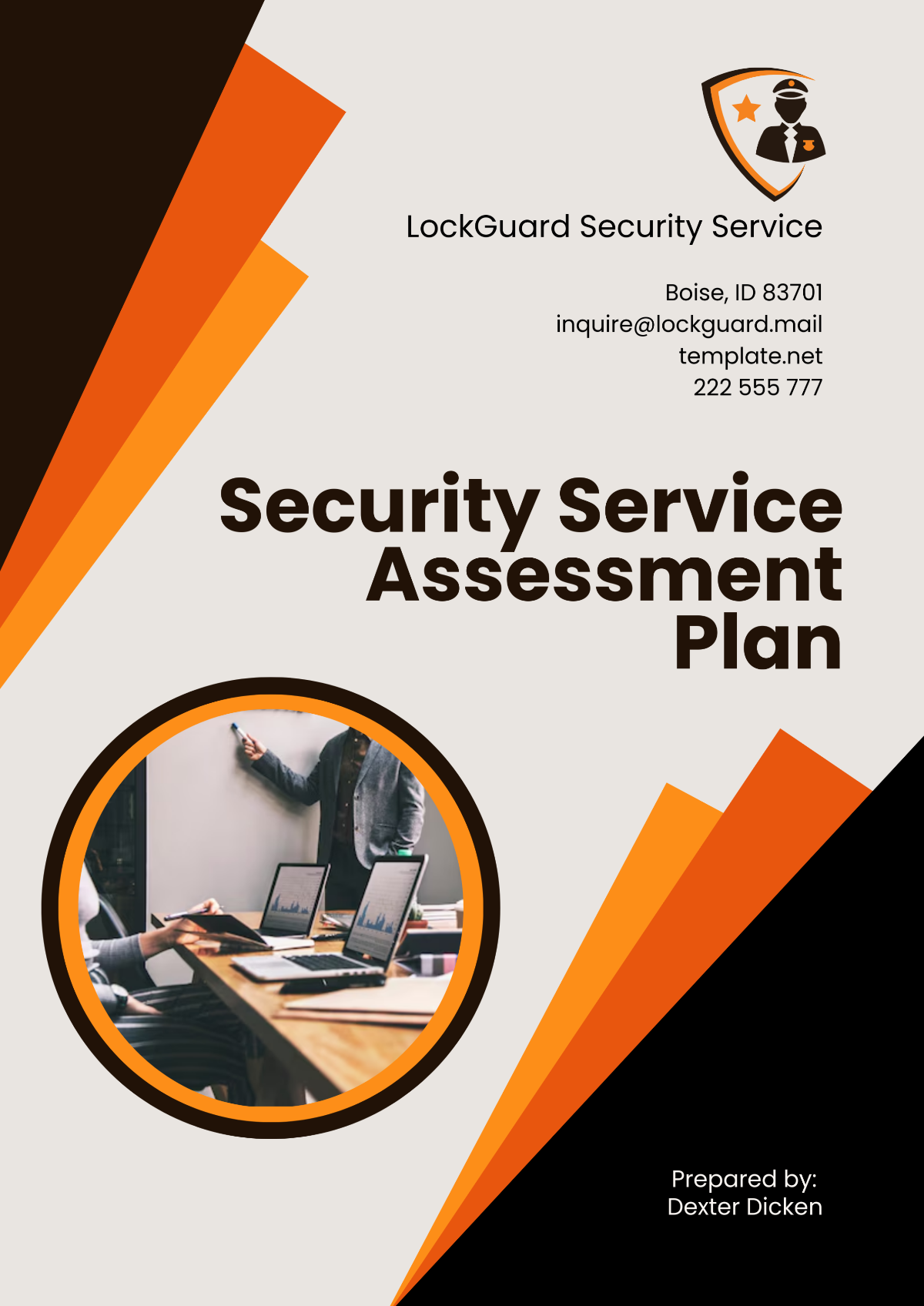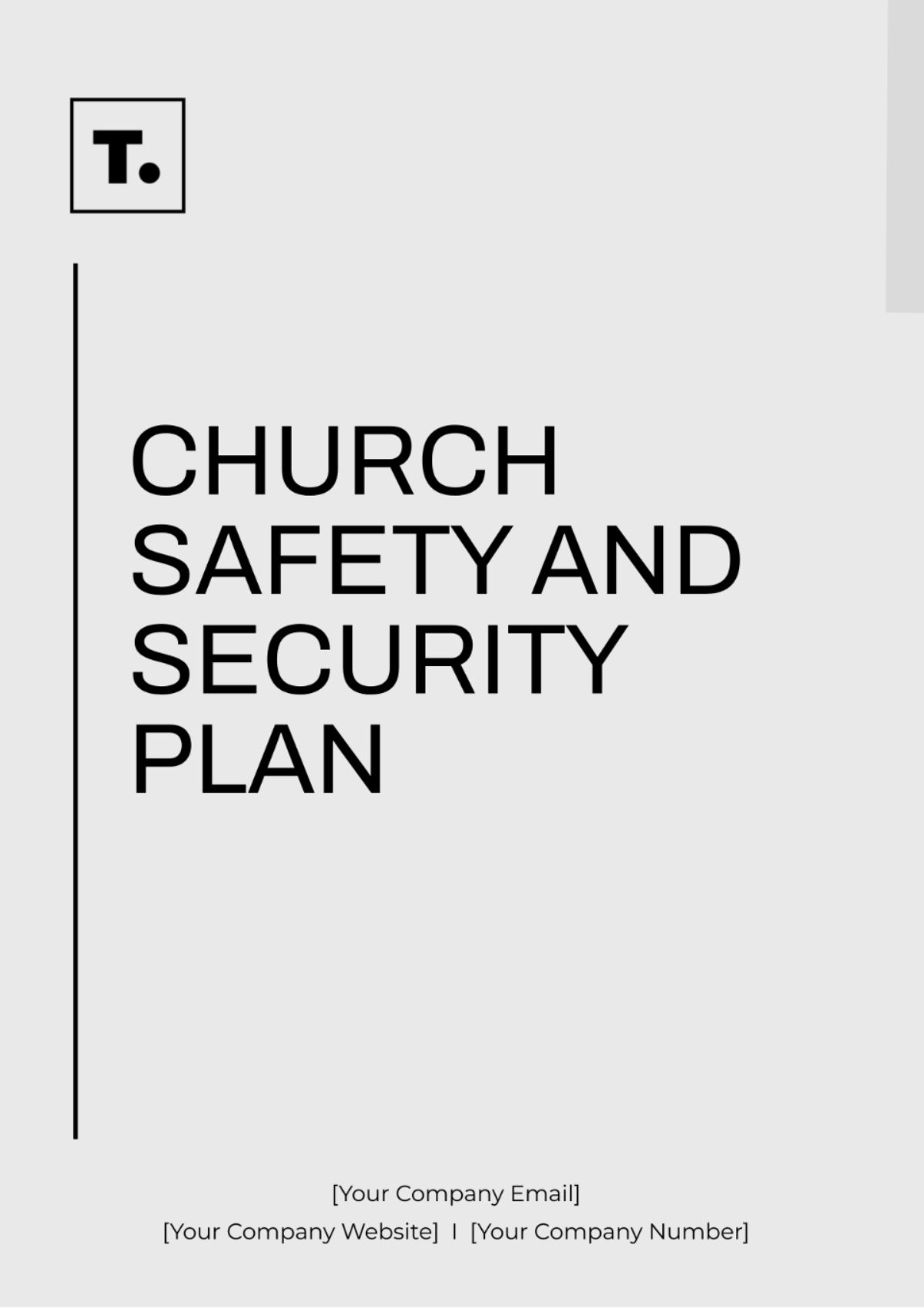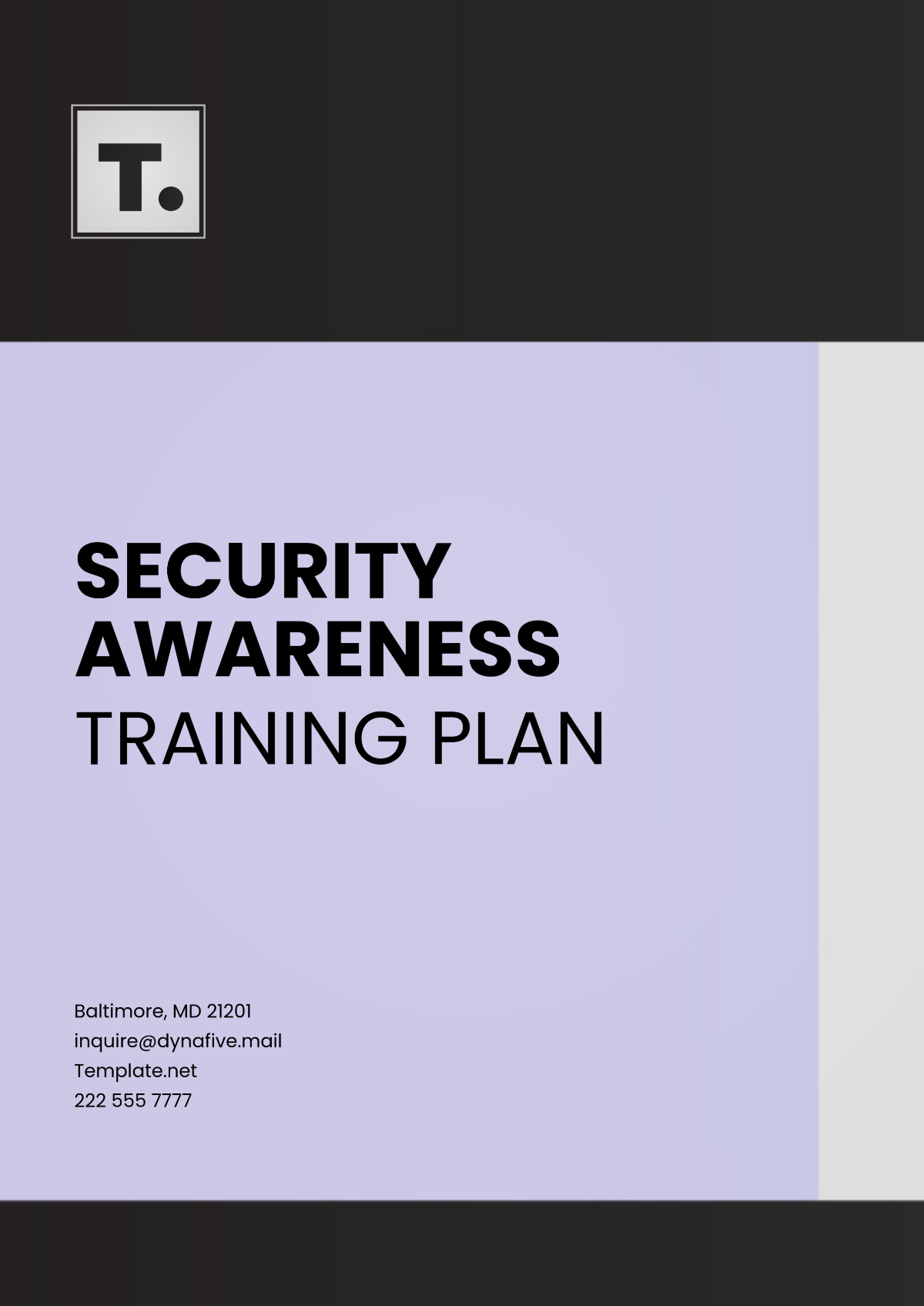Security Service Assessment Plan
I. Introduction
In an increasingly interconnected world, businesses are faced with an array of cybersecurity threats that can undermine their operational integrity, reputational standing, and financial viability. As organizations digitize their processes and data, it becomes critical to implement robust security measures that effectively safeguard sensitive information and maintain the continuity of business operations. The Security Service Assessment Plan (SSAP) aims to provide a comprehensive framework for evaluating the effectiveness of security services employed by [Your Company Name].
This assessment plan serves as both a strategic tool for internal stakeholders and a formal mechanism for communicating security strategies with external parties, including regulators, partners, and clients. By regularly assessing security services, [Your Company Name] can not only proactively defend against emerging threats but also continuously improve response times, optimize resource allocation, and enhance overall resilience against cyber risks.
II. Objectives
The primary objectives of this Security Service Assessment Plan are multifaceted, ensuring a comprehensive evaluation of all security measures in place:
Identify and assess security risks: To thoroughly evaluate current security measures and detect potential threats or vulnerabilities within [Your Company Name]'s infrastructure. This involves a systematic review of existing policies, technologies, and protocols.
Evaluate the effectiveness of existing controls: To verify that current security measures are adequately protecting critical assets and ensuring compliance with applicable laws, industry standards, and regulatory requirements. A critical evaluation will help determine if the implemented controls are effective against known threats.
Improve security posture: To recommend new or enhanced security services that address gaps in existing controls and strengthen the organization's defense mechanisms. This may include the introduction of advanced threat detection systems or employee training programs.
Enhance response readiness: To ensure that incident detection, response, and recovery procedures are regularly tested, efficient, and up-to-date. By simulating attack scenarios, [Your Company Name] can better prepare its staff to respond to actual incidents.
Support compliance: To guarantee that [Your Company Name] meets or exceeds the security standards required by industry-specific regulations, including but not limited to data privacy laws, payment card industry standards (PCI DSS), and international cybersecurity frameworks. Compliance is not just a legal requirement but also enhances customer trust and corporate reputation.
III. Scope
The assessment plan will cover a broad range of areas to ensure comprehensive coverage of all potential vulnerabilities:
A. Network Security
Firewalls and Intrusion Detection/Prevention Systems (IDS/IPS): Assess the configuration, policies, and effectiveness of firewalls and IDS/IPS to prevent unauthorized access.
VPN (Virtual Private Network) configurations and security: Review the implementation of VPNs for remote access, ensuring robust encryption and secure user authentication processes.
Network segmentation and secure communication protocols: Analyze the segmentation of the network to minimize the impact of potential breaches, ensuring that sensitive data is isolated from less secure areas.
Wireless network security: Evaluate the security measures surrounding wireless networks, including WPA3 encryption and proper guest access controls.
Perimeter defense and threat monitoring: Examine the measures in place to detect and respond to external threats, including threat intelligence integration.
B. Application Security
Web application firewall (WAF): Assess the effectiveness of WAFs in protecting against common web-based attacks such as SQL injection and cross-site scripting (XSS).
Vulnerability testing and patch management: Conduct regular vulnerability assessments to identify and remediate software vulnerabilities, ensuring timely updates and patches.
Secure coding practices and software development lifecycle (SDLC): Evaluate adherence to secure coding guidelines and the incorporation of security into the SDLC.
Application-level encryption protocols: Review the use of encryption within applications to safeguard data at rest and in transit.
C. Data Security
Data encryption (at rest and in transit): Assess encryption methodologies employed for sensitive data storage and transmission to ensure compliance with data protection regulations.
Data loss prevention (DLP) strategies: Evaluate the effectiveness of DLP solutions in preventing unauthorized data transfers or leaks.
Access control and identity management systems: Review user access controls, authentication mechanisms, and identity management solutions to ensure proper access is granted only to authorized personnel.
Cloud storage security: Examine the security measures in place for cloud-based data storage, focusing on encryption and access management.
D. Endpoint Security
Anti-malware and antivirus solutions: Evaluate the deployment and effectiveness of anti-malware solutions across all devices within the organization.
Endpoint detection and response (EDR): Assess the implementation of EDR solutions that provide continuous monitoring and detection of threats on endpoints.
Device compliance and mobile device management (MDM): Review MDM solutions to ensure mobile devices comply with security policies and are adequately protected against threats.
Secure remote access protocols: Analyze remote access solutions to confirm they meet security standards and safeguard against unauthorized access.
E. Security Operations Center (SOC)
24/7 security monitoring and event correlation: Evaluate the capabilities of the SOC to monitor and respond to security events in real-time.
Incident detection, analysis, and response: Review the processes in place for identifying and responding to security incidents, including post-incident analysis for improvement.
Threat intelligence integration: Examine how threat intelligence feeds are integrated into security operations to enhance situational awareness.
Security incident and event management (SIEM) platform assessment: Assess the effectiveness of the SIEM platform in aggregating logs and detecting anomalies.
F. Compliance and Governance
Adherence to industry standards such as ISO 27001, GDPR, and NIST: Evaluate compliance with established frameworks and regulations that dictate security practices.
Role-based access controls and audit trails: Assess the implementation of role-based access controls (RBAC) and the effectiveness of audit trails for accountability.
Documentation and reporting procedures: Review the documentation processes to ensure compliance with regulatory requirements and best practices.
G. Physical Security
Data center security, including access controls and surveillance systems: Evaluate the physical security measures implemented in data centers, ensuring that only authorized personnel have access.
Office premises access control: Assess the access controls in place at office premises, including visitor management protocols and surveillance systems.
Physical security incident response: Review incident response plans for physical security breaches and ensure they are regularly tested.
IV. Methodology
The Security Service Assessment Plan follows a structured methodology to ensure a comprehensive evaluation of security services. This methodology consists of several well-defined phases:
A. Planning Phase
Define assessment objectives:
The first step is to define the specific objectives for the security assessment. This involves identifying high-priority assets and systems that require in-depth evaluation, such as customer data, intellectual property, and critical systems that support business operations. The objectives should be clearly articulated to guide the assessment process effectively.Develop assessment criteria:
Establish key performance indicators (KPIs) to measure the effectiveness of security controls. The assessment criteria should align with industry standards, compliance requirements, and organizational goals. For instance, if [Your Company Name] aims to maintain a [99]% uptime for critical services, this should be factored into the assessment criteria.Gather resources:
Identify the necessary personnel, tools, and technologies needed for the assessment. This includes assembling a cross-functional team comprised of internal security experts, third-party auditors, and automated assessment tools to enhance the evaluation process. A budget of approximately [$250,000] may be allocated for this phase, encompassing tool licenses, personnel hours, and any external consulting fees.
B. Data Collection Phase
Vulnerability scanning:
Utilize automated tools to perform vulnerability scans on networks, applications, and endpoints. These tools will identify known security flaws such as outdated software, missing patches, or misconfigurations. For example, using a tool like Qualys or Nessus can result in identifying up to [300] vulnerabilities across the organization, providing a clear starting point for remediation efforts.Penetration testing:
Conduct simulated cyber-attacks on key systems to evaluate the effectiveness of security defenses. Engaging a reputable penetration testing firm may cost around [$40,000] to [$80,000], depending on the scope and complexity of the systems being tested. This exercise can uncover previously unknown vulnerabilities and provide insights into how an attacker might exploit weaknesses.Security monitoring review:
Review logs, alerts, and incident reports from the SOC and SIEM platforms to identify recurring issues, false positives, or areas where visibility needs improvement. Analyzing the previous [12] months of logs may reveal common attack vectors and help refine detection strategies.Interviews and surveys:
Engage with key personnel to gather qualitative data on security policies, procedures, and awareness. Surveys can be used to assess employee adherence to security protocols and gauge the overall security culture within the organization. A sample survey of [100] employees can provide valuable insights into the effectiveness of current training programs.
C. Evaluation and Analysis Phase
Risk assessment:
Conduct a risk assessment by evaluating the likelihood and potential impact of identified vulnerabilities. Assign risk scores to each finding based on factors such as exposure, criticality, and potential business impact. For example, a vulnerability affecting a critical customer database might be rated with a high likelihood of exploitation and significant potential impact, resulting in a score of [9] out of 10.Gap analysis:
Compare current security controls against industry best practices and compliance requirements to identify gaps. This analysis may highlight areas where [Your Company Name] is falling short, such as inadequate access controls or insufficient employee training programs.Prioritization of findings:
Prioritize identified vulnerabilities based on risk scores and potential impact. Focus on addressing high-risk issues first to mitigate the most pressing threats. A sample priority matrix may look like this:
Vulnerability | Risk Score | Priority Level |
|---|---|---|
SQL Injection in Web App | [9] | Critical |
Outdated Antivirus | [7] | High |
Weak Password Policy | [6] | Medium |
Unmonitored Network Port | [5] | Low |
D. Reporting Phase
Compile assessment results:
Document the assessment findings in a structured report that summarizes key observations, risk assessments, and recommendations. The report should be comprehensive yet clear, enabling stakeholders to understand the security landscape at a glance.Executive summary:
Provide a high-level overview of the assessment findings in an executive summary. This should include critical risks, overall security posture, and recommended actions. For instance, the summary may state that [Your Company Name] faces a potential risk exposure of [$2 million] due to identified vulnerabilities, necessitating immediate action.Detailed findings and recommendations:
Elaborate on individual findings, detailing the vulnerabilities, their potential impact, and actionable recommendations for remediation. Recommendations should be specific, measurable, and time-bound, such as "Implement multi-factor authentication by [Q1 2051]" to enhance access security.
V. Implementation Plan
Upon completing the assessment, the next step is to develop an implementation plan that outlines how identified vulnerabilities will be addressed. This plan will focus on resource allocation, timelines, and responsible personnel.
A. Resource Allocation
Budgeting for security improvements:
Allocate a budget for remediation efforts based on the assessment findings. For example, if vulnerabilities identified during the assessment could potentially lead to a loss of [$500,000] in the event of a data breach, prioritizing a budget allocation of [$250,000] for immediate remediation efforts makes financial sense.Personnel assignment:
Designate specific individuals or teams responsible for implementing the recommended security enhancements. This should include IT staff, security officers, and any necessary third-party vendors. For instance, the IT team may oversee patch management, while a third-party firm handles penetration testing follow-up.Vendor engagement:
Identify any third-party vendors that may need to be engaged to assist in remediation efforts. This includes security consultants, managed security service providers, and software vendors. Allocating approximately [$100,000] for vendor services can provide necessary expertise and accelerate the remediation process.
B. Timelines
Implementation timelines:
Develop a detailed timeline for the implementation of security improvements. This should outline short-term (within [3] months), medium-term (within [6] months), and long-term (within [12] months) goals. For example, the timeline may include immediate patching of critical vulnerabilities within [30] days, followed by comprehensive training for all employees within [90] days.
Activity | Target Completion Date | Status |
|---|---|---|
Patch critical vulnerabilities | March 30, 2051 | Pending |
Employee training program | June 15, 2051 | Planned |
Implement MFA | September 30, 2051 | Pending |
C. Monitoring and Review
Establishing a monitoring framework:
Create a monitoring framework to track the implementation of security improvements and their effectiveness over time. This should include regular check-ins and updates on progress against the established timelines.Periodic reassessment:
Schedule periodic reassessments (annually or biannually) to evaluate the effectiveness of security improvements and make necessary adjustments. This ensures that [Your Company Name] remains agile and responsive to evolving threats.Feedback mechanisms:
Implement feedback mechanisms to gather input from employees regarding the effectiveness of security training and processes. This can help refine and improve ongoing security awareness initiatives.
VI. Performance Measurement
To ensure the success of the Security Service Assessment Plan, it is vital to establish performance metrics and regularly monitor progress. This section outlines key performance indicators (KPIs) and methods for tracking effectiveness.
A. Key Performance Indicators (KPIs)
Establishing relevant KPIs enables [Your Company Name] to measure the effectiveness of security enhancements. The following are key metrics to monitor:
KPI | Description | Target Value | Current Value |
|---|---|---|---|
Incident response time | Time taken to detect and respond to incidents | < [10] minutes | [15] minutes |
Patch management efficacy | Percentage of vulnerabilities patched within specified time frames | [100]% patched within [30] days | [85]% patched |
Security training completion | Percentage of employees who completed security awareness training | [100]% trained | [60]% trained |
Data encryption coverage | Percentage of sensitive data that is encrypted | [100]% encrypted | [75]% encrypted |
Security audit findings | Number of findings from security audits | < [5] findings per audit | [12] findings |
B. Monitoring Process
Regular reporting:
Establish a process for regular reporting of performance metrics to senior management. Reports should be produced monthly or quarterly and should include a summary of KPI results, status of remediation efforts, and any identified trends.Continuous improvement:
Use KPI data to drive continuous improvement initiatives. If certain KPIs are not meeting target values, investigate the underlying causes and adjust strategies accordingly. For example, if the incident response time exceeds the target, analyze incident reports to identify bottlenecks in the response process.Benchmarking against industry standards:
Compare [Your Company Name]'s performance metrics against industry benchmarks to evaluate relative effectiveness. This can help identify areas where improvements are needed and inform future security investments.
VII. Conclusion
The Security Service Assessment Plan presented herein is designed to provide [Your Company Name] with a structured and comprehensive approach to evaluating and enhancing its security posture. Given the dynamic nature of cybersecurity threats, it is imperative that organizations maintain vigilance and adapt their strategies accordingly.
Through a methodical assessment of existing security services, followed by targeted improvements based on identified vulnerabilities, [Your Company Name] can better protect its assets, ensure regulatory compliance, and maintain stakeholder trust. As we move forward, it will be crucial to adopt a culture of security within the organization, where employees understand their roles in safeguarding information and actively contribute to the security of the business.
Regular reviews of this plan will ensure that [Your Company Name] remains equipped to address emerging challenges in the cybersecurity landscape, fostering resilience and ensuring uninterrupted business operations.
VIII. Appendices
A. Security Services KPI Monitoring
Service Area | KPI | Target Value | Current Value |
|---|---|---|---|
Network Security | Average response time to threats | < [10] minutes | [15] minutes |
Application Security | Number of vulnerabilities patched | [100]% patched within [30] days | [85]% patched |
Data Security | Encryption coverage of sensitive data | [100]% encrypted | [75]% encrypted |
Endpoint Security | EDR deployment coverage | [100]% of devices protected | [70]% coverage |
SOC Performance | Incident detection accuracy | > [95]% accuracy | [90]% accuracy |
This comprehensive assessment framework equips [Your Company Name] with the insights and actions necessary to navigate the complex cybersecurity landscape of 2050 and beyond. By proactively addressing security vulnerabilities, enhancing employee training, and continuously monitoring performance metrics, [Your Company Name] will cultivate a robust security posture capable of withstanding future threats, ensuring that the organization remains secure and resilient in the face of evolving challenges.






























